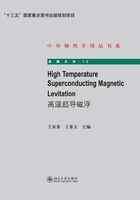
3.2 Rail traffic—the mainstream of the 21st century trans-portation
Comparing the rail traffic with other traffic modes, we find that rail traffic is un doubtedly the most reliable traffic mode.Its reliability results not only from a lower number of traffic accidents, but also less loss incurred from these accidents.The numbers of car and airplane accidents were 8.6 times and 7.1 times, respectively, more frequent than railway accidents in Japan in 1985.Compared with the auto mobile and aircraft accident rate, rail traffic accidents are nearly negligible.The mortality rate of the Japanese Shinkansen was zero during 34 years of operation.The mortality rates(people per ten billion person kilometers)for cars, planes, and trains were 501,5.31,and 0.78,respectively1.The total number of people killed worldwide in road traffic accidents is more than 22 million2,which is close to the 26 million soldiers killed in World War II.
In addition, railway traffic has a series of advantages3.Compared to automobile or air transport, railway transport produces the lowest amount of emissions.Rail way traffic is an efficient and environment-friendly transport system in most cases, where large volumes of goods can be transported for long distances quickly and with a minor impact on environment.Transport’s share of CO2 emissions from fuel combustion is about 30%of all emissions.CO2 emissions for railway, bus, aviation, and automobile are 19,51,109,and 147 grams per passenger-kilometer(g/pkm),respectively4.From the total costs of reduction of negative impacts on environment in the transport industry, only 8% comes from railway transport, while up to 90%comes from road transport, even though its traffic performance is lower by 50% than the traffic performance of railway transport.Transportation taxes are based on the environmental(pollution, noise, etc.)cost, thus it is more competitive to increase railway than the highway and aviation transport.
Another important argument placing railway transport above road transport is a lower occupation of agricultural land. While road transport occupies almost 74%of such land, railway transport occupies 26% only, even though its traffic performance is almost twice as big as that of road traffic.In general, total area for highways is three to four times that required for the railway.
In the national economy, railway traffic has its specific and irreplaceable po sition.It enables and facilitates transportation of goods at much cheaper cost.In comparison with road carriers, railway transport also has lower restrictions.Road carriers must respect several regulations, such as limitations in utilizing highways and primary roads, limitations in peak traffic, or obligations for driver safety breaks.Road traffic is a disordered traffic tool.Traffic"jams"often block roads, causing a great waste of time and economic loss.In 1991,in 37 American cities each with a population over one million,91%of the cars experienced traffic jams with a total economic loss near $100 billion.
Investigations of consumer preferences for air and HSR services in Japan were conducted by Fu5. Overall, airline, road traffic and HSR modes compete actively with each other in the distance range of 300 km to 1000 km.The results show that the rail market share was 53%,69% and 36% for 300—500 km,500—700 km, and 700—1000 km distance ranges, respectively.Airline’s market share was 5%,19% and 56%,respectively, for the same distance ranges in intra-Japan markets.Road traffics’market shares are 42%,12%and 8%respectively for the same distance ranges in intra-Japan markets.Thus it can be seen, HSR for 250—300 km/h speed has obvious market advantages for the 1000 km journey.
For those reasons, more than 200 countries will construct urban railway transit systems, the vast majority are funded by government. Rail Transportation is the mainstream of the 21st century transportation.All countries in the European Union have express trains running between their major cities with several countries also operating high-speed trains.The high-speed railway is also being developed very rapidly in China.